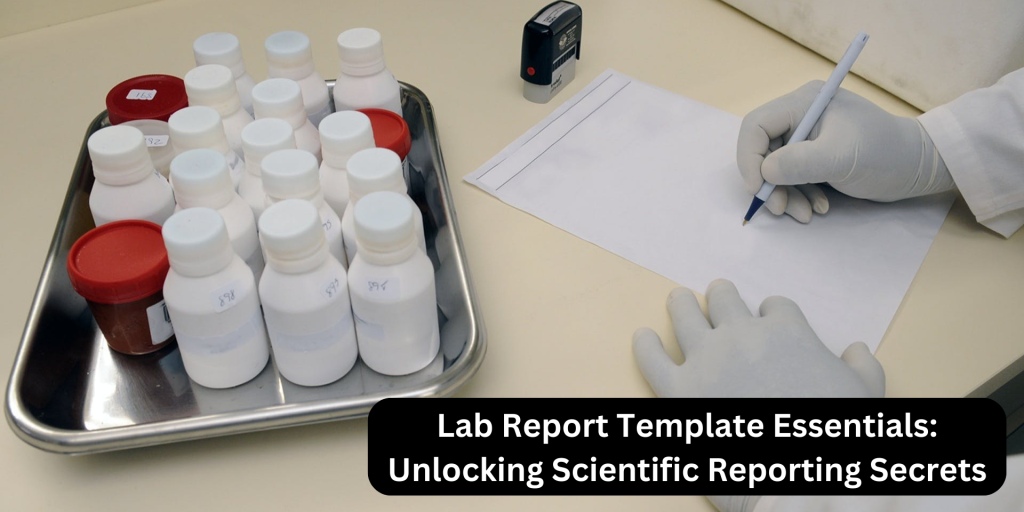A well-written lab report effectively communicates your laboratory experiment findings, offering valuable insights and a broader understanding of scientific processes. A lab report template, thus, remains an indispensable tool guiding students in documenting their methodologies, analyses, and results. However, many students struggle to create an effective lab report structure, leading to flawed reports that compromise the accuracy and impact of their findings. This article explores lab report template essentials and how professional support can maximize your report’s clarity, coherence, and adherence to scientific standards. Our experts also help students with their lab report assignments and projects.
Lab Report Template
A lab report constitutes several parts, including;
Title
The report’s title specifies what the document is about and what the experiment is based on or what you’re studying. It’s written on a separate cover page and includes the lab title, course number, experiment date, and names of all participants.
Abstract
The abstract gives the reader a quick overview of the report, enabling them to understand the document’s contents without reading the entire piece. Summarize the report in less than 250 words, highlighting its objectives, methods, results, and conclusion. The abstract follows the same order as the rest of the report.:
- Start with a background sentence.
- Write the main objective of the report and the hypothesis.
- Describe key points in your methodology.
- Summarize the results quantitatively and qualitatively.
Lab Report Introduction Template
A lab report introduction highlights the experiment’s context, objectives, and significance. State the hypothesis and outline your experimental approach. Start with the issue or problem you’re trying to solve and offer some background information. Conclude the introduction in one sentence with a clear statement of the report’s purpose, guiding readers into the main discussion.
Materials and Methods
Detail the equipment and materials used in the experiment. Give a step-by-step description of the methods used to arrive at your results. These may include specific measurements, settings, and procedures. For instance, describe how you used a Spectrophotometer (model ABC) to measure absorbance at 350nm. Samples were prepared by diluting 0.5ml of the solution in 8ml of distilled water, following a standardized protocol.
Findings and Results
Present your findings precisely in the order of your procedures and observation. Consider using tables, graphs, or figures to enhance clarity. Report measurements and observations, including patterns or trends noted during the experiment. For example, “The average reaction rate increased with temperatures as illustrated in the first table. Statistical analysis confirmed a significant correlation (p<0.5) between temperature and reaction rate.”
Discussions
The discussion section of a lab report template interprets and analyzes results obtained in the experiments. Address whether the findings support the hypothesis, explore any unexpected results, and discuss the implications of these findings. Explain how the research or experiment related to past experiments done in the same field. Additionally, compare results with relevant literature, acknowledge limitations, and suggest possible improvements.
Conclusion
This is the final section of the lab report. Restate the report’s purpose, main findings, and how these results contribute to the field of study. Conclude THE Last sentence with insight gained and suggestions for future research, If applicable.
References
List all sources cited in the research. Include author(s), title, publication year, source (book, journal, etc.), and relevant publication details such as page numbers. Adhere to the instructor’s or journal’s guidelines on suitable citation styles (APA, MLA, Chicago, Harvard). Like the title, lab report references should appear on a separate page from the rest of the report.
Remember to include the raw data in the report in the appendices section. These may include sample calculations or data tables not crucial to the lab report’s discussions but may be helpful to the reader for reference.
General Tips for Writing a Lab Report Template
Here are general tips to remember when writing a lab report;
- Present your report in the third person. Occasionally, use the first person to avoid the overuse of the passive voice.
- Follow a standardized structure and citation style specified by the instructor or your institution.
- Use clear and concise language, ensuring your writing is accessible to a broader audience.
- Avoid personal opinions and anecdotes in your report. Stick to facts and maintain a professional tone throughout.
- Discuss your findings objectively, interpreting them in the context of the hypothesis and existing literature.
- Present accurate results using graphs, tables, and figures as required. Label all axes, units, and data points.
- Like any other academic report or essay, proofread and edit your lab report for grammar, spelling, and formatting errors.
Get Help Crafting a Comprehensive Lab Report Template
A lab report template is the roadmap to effective scientific reporting. A well-structured template adheres to all the key sections, from the title to the references, ensuring clarity, consistency, and standardized format in scientific communication. Request help from experts on refining your la




